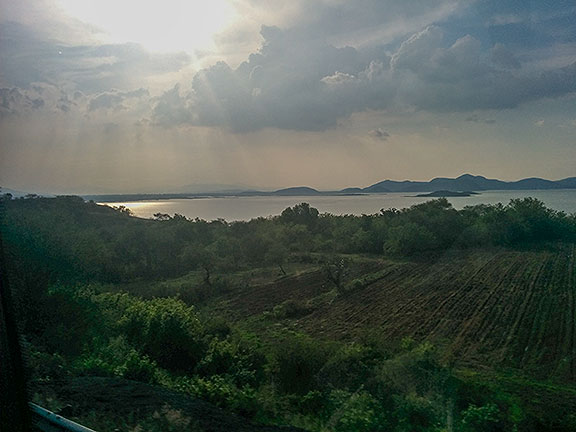
Lago de Cuitzeo on the road near Morelos, during the bus ride from Mexico City to Guadalajara.
I’m in Mexico City. I arrived a couple of weeks ago and will be here until mid-August. I’m enrolled in a Spanish class at the UNAM, Mexico City’s enormous free public university, and I’m staying in a very gentrified neighborhood called La Condesa, in an apartment that is a bit of a dump, but it’s working out ok.
Learning Spanish has been a goal that I’ve intermittently felt committed to since 1979. As it happens, I’ve had many experiences in Spanish-speaking countries, and living in the Mission with a Mexican wife gives me lots of regular opportunities to be in Spanish speaking situations. Still, in spite of all that, I have always had a lot of trouble speaking, and my comprehension is very unreliable, going from 25% to close to 80% at times. After my visit to Chile in March/April of this year, I finally broke through a persistent ceiling and found my tongue. It doesn’t mean I don’t speak very garbled Spanish, but at least I can generally make myself understood and I can usually understand what people are asking of me. Now I’m in a Basic 4 level class, and once again am face to face with the task of memorizing long lists of verbs and conjugations, something I started to do 36 years ago when I was in a Spanish program at SF State, but haven’t really tried to do since then.
So far, after two weeks with four to go, I’m feeling happy about my progress. I still can’t come up with the correct verb forms most of the time, but I do feel more in the moment and capable of interacting with people as needed. I also have to face the fact that I’m actually not that extroverted when it comes to just walking up to total strangers and talking to them.
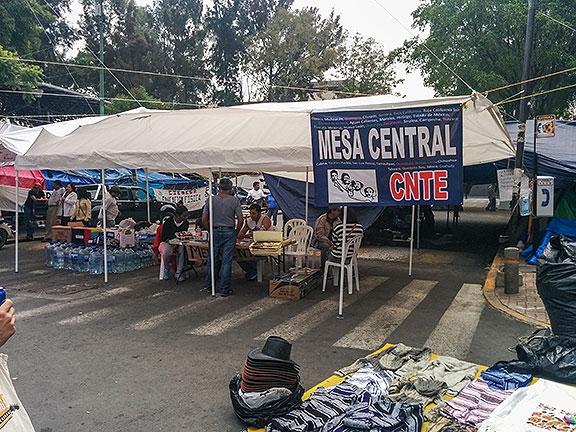
The ongoing nationwide protests by teachers against the neoliberal reform program installed by the Federal government has brought thousands of teachers from near and far to a huge camp-out near the Ministry of Education.
We took a walk to the center of town a couple of days ago and accidentally found ourselves passing through riot cops and giant metal barricades. After we emerged from that (they were all lounging around and nothing was “happening” at the time) we found ourselves a couple of blocks later in the midst of a sprawling tent city of striking teachers from all over Mexico that have gathered in the area to pressure the Ministry of Education and to demand that the neoliberal program of education reform be rescinded. It was interesting, though I didn’t get into any conversations as we wandered around amidst the many tents and small tiendas.
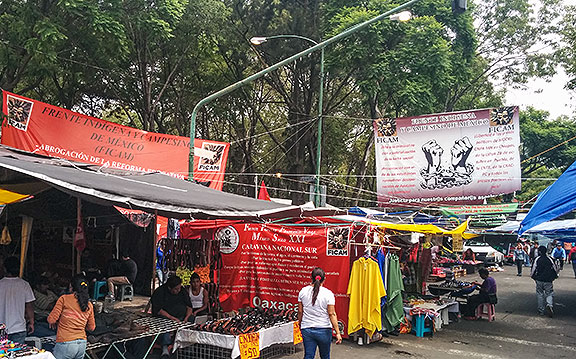
Countless tents and banners proclaiming the goals clog several square blocks in the heart of Mexico City.
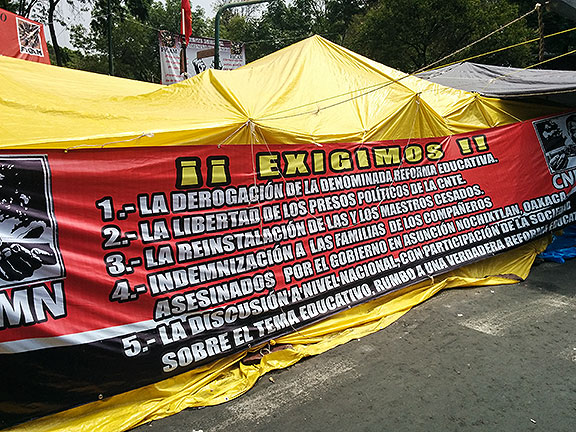
The demands are everywhere… release the teachers jailed during protests, halt the reforms, etc.
Since arriving I’ve been following the movement of teachers in the excellent local newspaper La Jornada. There have been daily blockades in many Mexican states, from Oaxaca and Chiapas to Nuevo León and Michoacán. In Oaxaca there was another massacre in a town called Nochixtlán where a half dozen teachers were gunned down, apparently by goons employed by the former governor of the state. The teachers movement is complicated by the fact that there are two unions claiming to represent them, the state-run, top-down SNTE, and the independent union that most of the active teachers are affiliated with, the CNTE. It is the latter that is camped out in Mexico City over several square blocks.
I am far from expert about the struggle underway, but clearly the teachers are demanding the rollback of the neoliberal reforms that have been established by federal law. The reforms subject teachers to testing and suspend their labor rights under previously established labor law, typical of neoliberal, market-inspired reforms. The CNTE doesn’t recognize the negotiations that are underway between the Ministry of Education and the SNTE, and are involved in their own three-part negotiations with subordinates of the Education Minister. The blockades have stopped major highways in many parts of the country, and clearly the government is backtracking and trying to find a way to wait the movement out, or to offer minor concessions that don’t affect the deeper attack on teachers, but the teachers are so well organized and so well informed, it seems unlikely that the Mexican government will be able to avoid re-doing the entire package of educational reform. For now, it’s a high tension game of negotiations and direct action, fascinating to see.
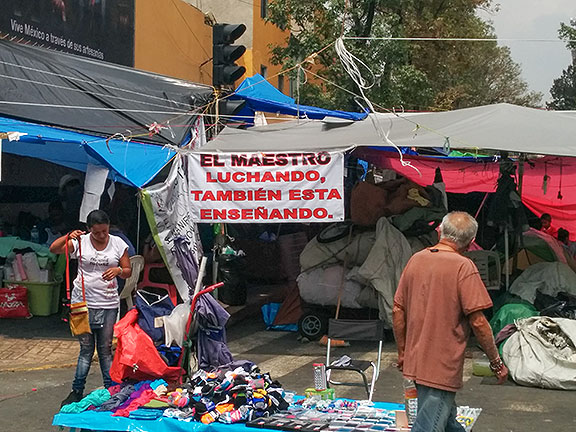
The teacher fighting is also teaching.
I saw in the paper a few days ago there was going to be a book launch for a new book called “Mexico Armed,” by Laura Castellanos. I went to the event at the publisher’s offices at the edge of Colonia Roma, where two rooms were jam-packed with over 100 attendees. It was extremely interesting for me, and happily, I felt I could understand nearly everything, even the jokes! So a real sense of progress. The discussion by the four different speakers, including the author, emphasized that the sclerotic Mexican political system had again and again met civic protest with violence and that it was state violence that preceded the emergence of armed struggle groups in Mexico in every instance covered in the book, over 30 different examples between 1943-1981.
The goal of the book, researched carefully over ten years, is to put in proper order the sequence of events and movements that took place in Mexico since WWII. According to the journalist who introduced the evening, various bits of the history have been written here and there, covering one movement or another in its time. But no one ever sought out people who lived through the movements, done the oral histories, and contextualized the actual history of the emergence of armed struggle groups with the preceding events of civil protest and violent repression by the state. According to this book, the Mexican state closed all paths for negotiations and compromise whenever any civil protest emerged, meeting such movements with violence almost at once, which led to a sordid history of brutal and indefensible oppression. One of the speakers emphasized that Mexico was the only Latin American society that had never put its military on trial for crimes against humanity. There has been a dirty war in Mexico (guerra sucia) going back 60-70 years, and it continues to this day. More than 20,000 disappearances have gone uninvestigated, and dozens of massacres of citizens by the military and police have never led to any prosecutions or convictions, etc.
The government is already talking about paying reparations to the victims of Nochixtlán, which might be evidence of how tenuous the legitimacy of the Peña-Nieto regime is these days. Enrique Peña-Nieto, candidate of the long-time one-party state PRI, was elected president a few years ago in spite of the #YoSoy132 movement and a generally derisive attitude towards his intelligence and competence. Some think he was elected because the PRI at least had shown an ability during its long history to keep organized crime in its place, whereas the failed presidencies of Fox and Calderon, both of the opposition right-wing party PAN, had seen the wide expansion of narco-gangsterism and the mayhem that followed. During Calderon’s term, he mobilized the Mexican military to combat the drug cartels and only succeeded in having 30,000 killed during his 6-year term with no appreciable reduction in drug trafficking or diminishment of the power of the cartels.
Journalists are murdered in Mexico at a higher rate than anywhere else in the world. In spite of that, there is excellent daily La Jornada, and the good weekly investigative magazine Proceso, both of which don’t hold back in investigating the corruption and absurdities of Mexican power and politics. A new-ish website (maybe a couple of years old now) at horizontal.mx does a great job of presenting Mexican history, current events, political and philosophical discussions, and more. In fact, for me it seems there is a much better press here than in the U.S.
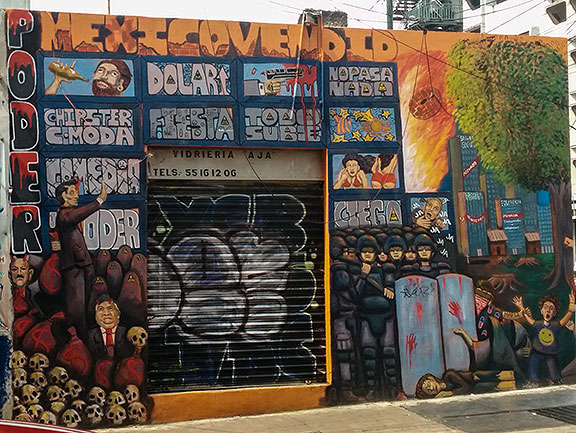
Wild mural on nearby building in Mexico City.
I also love Mexican culture. I got to go to Guadalajara last weekend to visit family and we went to the Museo Las Cabañas where the great frescoes of Jose Clemente Orozco are. We also visited the UDG museum which was featuring a remarkably good exhibit of modern art. This past week, back in Mexico City, I went to the Museo de Arte Moderno, hoping to see their 38 paintings by Remedios Varo, but they’re all out on loan to other institutions. Still, they had a bunch of interesting paintings by Orozco, Sigueiros, and other Mexican artists that I didn’t know already. They also had a lovely exhibit on the once-mysterious B. Traven, who wrote great novels of Mexico in the 1920s, set amongst mahogany cutters, gold miners, and others
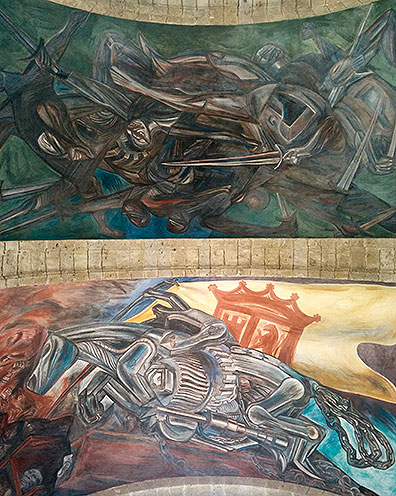
Ceiling frescoes at Las Cabañas by Jose Clemente Orozco in Guadalajara.
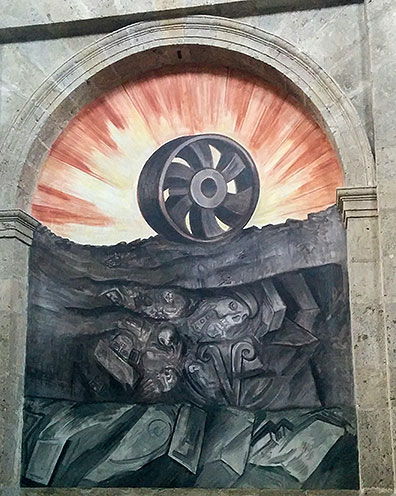
More Orozco
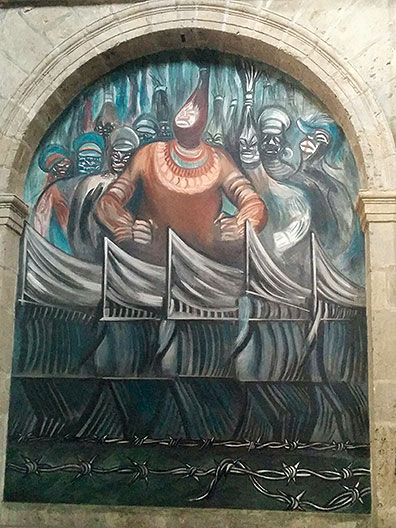
and still more…
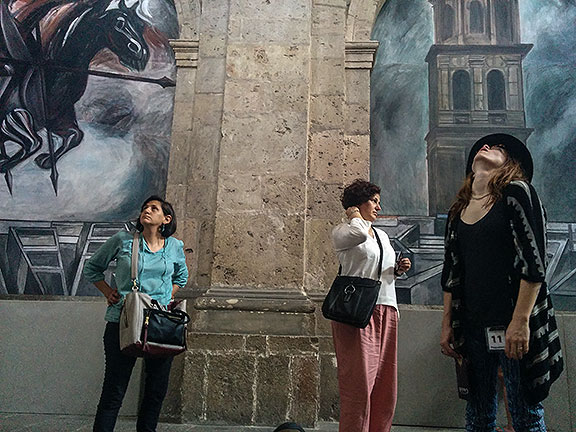
How to view Orozco!
Mexico City is a great city. It has so much going for it, it’s just a drag that the air is SO bad, the tap water is a cesspool of unknowable contaminants, and the much-ballyhooed food is also of questionable hygiene. The cuisine here is on par with the great cities of the world, and you can easily find almost any type of food, prepared for the big spender or as street food. But I’m also reading a book by the guy who we’re renting an apartment from, Kurt Hollander, Several Ways to Die in Mexico City, which is a harrowing account of the microbial realities all around me while I live here. It has made it difficult to feel at ease, knowing that almost anything I touch or ingest is probably introducing a new microbe or parasite into my intestines. I feel like a ticking time bomb sometimes, but for now, I just have a full blown head cold, exacerbated by breathing the toxic air. At least it’s the rainy season, so we have lovely thunderstorms and downpours almost every evening (though according to Hollander’s book, that just drives the worst of the heavy metals and other pollutants closer to the ground and making them more likely to get into your lungs!).
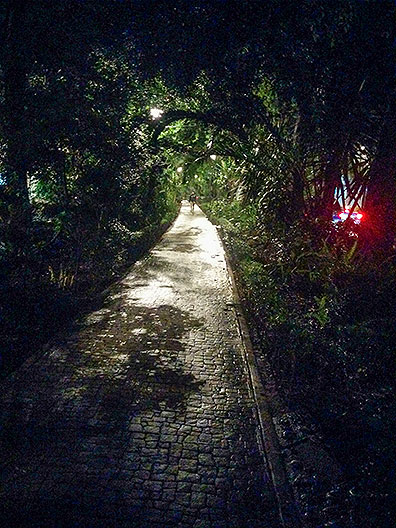
Just outside our apartment is this beautiful walkway in the center median of Avenida Amsterdam.
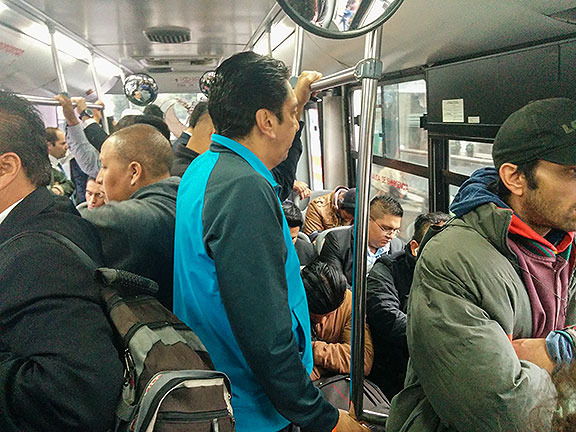
Everyday we take the Metrobus to UNAM, about a 35 minute ride… always jammed!
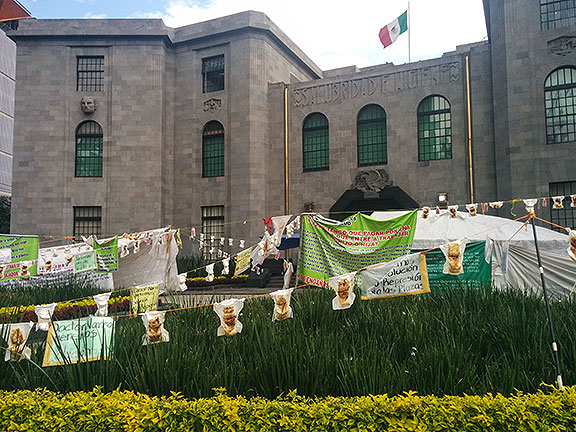
A whole ‘nother protest at the Ministry of Health where there are hundreds of poopy diapers hung around the building!
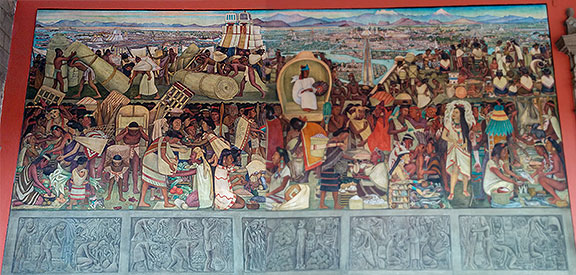
In the National Palace got to gaze at Rivera’s amazing murals again, this one depicting the City when it was an island…
and just for fun, in case anyone wants to revisit something I made with Caitlin Manning back in 1994, here’s our half hour video on the Zapatistas after their first National Democratic Convention in the Lancondan jungle…












Hola, Estás en México? sería un honor poderte invitar a charlar con nosotros y nosotras en un espaico hacktivista. Cómo podemos contactarte?